How to Schedule Milk Feeds with Solid Food for Baby-Led Weaning
- The recommended and appropriate time to make changes to milk feeds in a baby's schedule when starting baby-led weaning
- Milk feeding guidelines from the Centers for Disease Control and the American Academy of Pediatrics
- Milk schedules and food patterns that can be followed while babies are introduced to a variety of foods
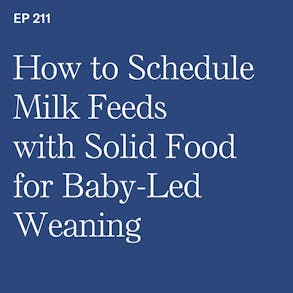
LISTEN TO THIS EPISODE
Episode Description
Should I feed my baby less milk after starting solids? Do I feed my baby solids before or after milk? And how much milk should my baby drink when starting food? In this episode I will be sharing some ideas on how you can schedule milk feeds in combination with food patterns throughout the baby-led weaning journey.
Links from this Episode
- Baby-Led Weaning with Katie Ferraro program with the 100 First Foods™ Daily Meal Plan, join here: https://babyledweaning.co/program
- Baby-Led Weaning for Beginners free online workshop with 100 First Foods™ list to all attendees, register here: https://babyledweaning.co/baby-led-weaning-for-beginners
Other Episodes Related to This Topic
- Episode 17: “Feeding Schedules: How Often Should I Feed My Baby?”
- Episode 55 “How to Drop a Milk Feed”
- Episode 113: “Transitioning to Cow's Milk: How Do I Do This?”
- Episode 185: “6-7 Months Old Babies: Sample BLW Feeding Schedule”
- Episode 187: “8-9 Months Old Babies: Sample BLW Feeding Schedule”
- Episode 189: “10-11 Months Old Babies: Sample BLW Feeding Schedule”
- Episode 191: “12 Month Babies: Sample BLW Feeding Schedules”

Latest Episodes
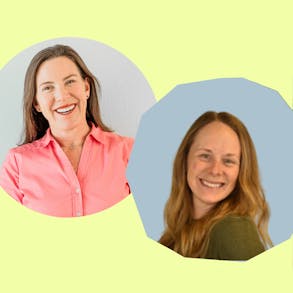
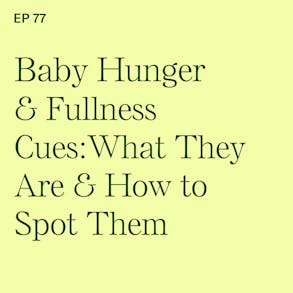
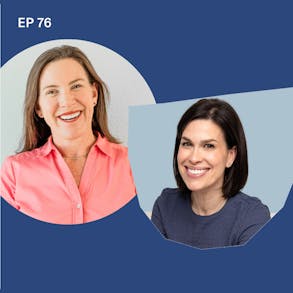
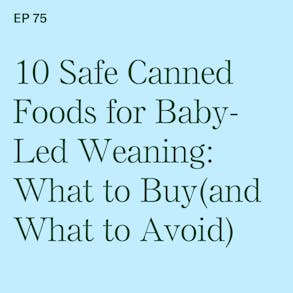
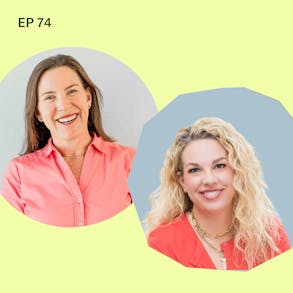
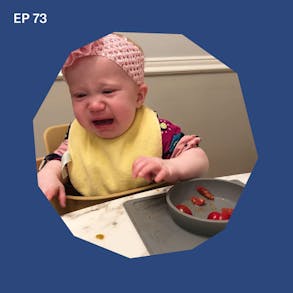
Katie Ferraro (0s):
All of you, you know, you're at the pediatrician six months check. I remember him saying, well, how much milk are they drinking? And so at that time I was pumping, I remember saying they're drinking three, eight ounce bottles a day and his eyes got really big and he's like, whoa, that's aggressive. Hey, there I'm Katie Ferraro, Registered Dietitian college nutrition professor and mom of seven specializing in baby-led weaning here on the baby-led weaning made easy podcast. I help you strip out all of the noise and nonsense about feeding, leaving you with the competence and knowledge. You need to give your baby a safe start to solid foods using baby-led weaning.
Katie Ferraro (41s):
Hey guys, welcome back in today's episode, we're going to talk about How to Schedule Milk Feeds with Solid Food for Baby Led Weaning. And I'm super excited about this episode because: A- I love schedules and B- parents ask this question all the time. So I like to start each of our mini BLW training episodes with a BLW tip of the day. And the tip for today is you don't actually need to make any changes to your milk schedule for about the first eight weeks of baby led weaning. All right, so let's say you're starting baby led weaning around six months of age, not earlier because babies don't need anything except infant milk up until six months of age and infant milk for the sake of this conversation means breast milk and or formula.
Katie Ferraro (1m 22s):
So we wait until six months of age, plus when baby's sitting up relatively on their own. And then generally for the first like eight weeks, I like to call that phase one of baby-led weaning, your babies still learning how to eat, and they'll continue to learn how to eat, but those first eight weeks, it can be real slow. And for most of you, you won't need to make any changes until then. Now I remember when I was doing baby-led weaning with my quadruplet babies. I had an older baby who was one and a half when the quads were born. And I had struggled a lot with spoonfeeding. Her decided to do baby led weaning at six months of age, when they were six months adjusted age, I should add. So my quadruplets were born at 34 weeks, so that's six weeks premature. So we waited until they were seven and a half months chronologically, which was their six month adjusted age before we started solid foods.
Katie Ferraro (2m 6s):
And like, all of you, you know, you're at the pediatrician six months check and which I was always late for. And the doctor's like I started solid foods. I was like, well, when they're six months adjusted age, I'm going to do baby-led weaning. And I remember him saying, well, how much milk are they drinking? And so at that time I was pumping and supplementing with formula. So it was always like 50, 50. I'd make enough for all four of the babies, half of their bottles, or if someone was sick, I would like give that baby mostly breast milk in the other ones we'll get formula. But, basically I remember telling my pediatrician at six months of age, like clear as day, like it was yesterday. I remember saying they're drinking three, eight ounce bottles a day and his eyes got really big and he's like, whoa, that's aggressive. And I remember being like, did you just go my feeding schedule aggressive?
Katie Ferraro (2m 49s):
Like I am feeding four babies at one time. They are all on their growth curve. They're doing fine. And what he basically meant is that most six month old babies are having a few more bottles that a day. And they're a little bit smaller in volume. But I also remember the way I felt when he told me my schedule was aggressive. And I was like, why am I doing it wrong? He's like, no, it's just not how everyone does it. And I was like, okay, is there anything concerning about that schedule? He's like, no. And then I realized like there's no right or wrong way to feed a baby. They were getting the volume in a 24 hour period. They were growing and thriving. And again, I was having to already do this three times a day, four bottles. It was lot. They were just fine. So you do you, when it comes to your milk schedule, I never want you guys to compare your milk schedule to anyone else's.
Katie Ferraro (3m 33s):
But I do sometimes think that hearing ideas of what other people are doing. Like I, maybe I should have said to him like, well, tell me what the other mom with quadruplets at six months is doing that you know of. And the point was, he didn't know anyone, but he knew lots of other babies. And I probably could have learned from his experience. Was it a lot of volume maybe, but they were doing fine. They weren't vomiting. They were thriving. So like I said, there's no one right way or wrong way to do the bottles. Now having a little bit more experience in being older, I realized, and also working in this field, okay. Most babies are six months of age. Aren't doing full blown, eight ounce bottles. And they're probably having at least four bottles a day, but whatever it worked and by the way, the quadruplets are fine at this point. So back to the infant milk schedule stuff, I mentioned, what is infant milk, right?
Katie Ferraro (4m 14s):
Breast milk and or formula. How much milk should our babies be eating? That's not what this episode is about. I will share some guidelines, but I want you to know if it was the second. You say a guideline, the parents like, oh my baby's not doing that. What am I doing wrong? I'm not sharing these guidelines to make you feel bad. Just I'll share two guidelines centers for disease control in American Academy of pediatrics CDC says that most six to 12 month olds need infant formula or solid foods about five to six times in a 24 hour period. So if you're doing solid foods, one or two times, then your baby's probably having somewhere around three to five bottles a day, okay? Somewhere in there. Now, as your baby gradually starts to eat more food.
Katie Ferraro (4m 54s):
When weaning gets going, that's weaning and action, right? When baby starts to eat more nutrition from food and get less nutrition from milk. That's what weaning is. Of course, the amount of formula or breast milk he, or she will need or take will gradually start to decrease. But it's not like at a certain age, you need to be at X number of ounces. The American Academy of pediatrics gives another guideline, which I, again, I'm always loathed to share like numbers because then parents get out their calculator and they want to do exactly what that says. But on average, babies taken about two and a half ounces. So 75 mls of formula a day for every pound of body weight. So if you wanted to like ballpark it two and a half ounces of formula, this is for formula fed babies.
Katie Ferraro (5m 35s):
I know you guys can't measure your breast milk unless you're pumping it, but two and a half ounces of formula a day for every pound of body weight. But babies regulate their intake from day to day. So don't force-feed them or make them eat more than they want to. Okay. So try not to go by fixed amounts, try to follow baby's cues to let them tell you when they've had enough. Okay. But basically another AAP guideline, which I do like his baby should not drink more than 32 ounces of formula in 24 hours. I remember that those quadruplets at that same age, when they were drinking 24 ounces of formula, my sister-in-law was like 18. At the time, she was a freshman in college and she would like want a party. And I was like, can you please come over and help me feed babies. We went to a wedding and she babysat our friend for that weddings baby, who was the same.
Katie Ferraro (6m 19s):
was like a couple months older and the baby drank 36 ounces of formula during the wedding. And she's like, the mom just said to keep feeding him. If he would take it. I was like, oh my God, did you just feed a baby 36 ounces of formula in like a five-hour period. But the point is, if we let them go and go and go and go, and aren't paying attention, there is the potential. If we're training the baby or conditioning them to drink lots and lots more formula than they need, of course, there's always the potential for overfeeding with formula. So upper limit 32 ounces. Now that's in a 24 hour period. That's for most babies. A thing I want to point out with the milk feeds is sometimes we think because our babies are always getting bigger. Like the cloth size is getting bigger and the diaper size is getting bigger that the amount of formula or infant milk, breast milk that they're going to be drinking gets bigger.
Katie Ferraro (7m 4s):
It tops out around nine or 10 months of age. When your baby gets jamming on foods, they are going to start drinking less milk. And some parents I've worked with like, well, if they drink 24 ounces at six months, I got to go to 36 at nine months. No you don't our goal by 12 months when we make that transition to cow's milk is 16 to 24 ounces a day. And I share that because that's the AAP guideline. Personally, I've always done better with babies drinking 16 to 20 ounces of cow's milk after age one. So if you're at 36 ounces of formula at nine months of age, how are you going to get to 16 ounces of cow's milk at 12 months of age? That's a huge drop. Just keep an eye on the volume.
Katie Ferraro (7m 45s):
Don't go above 32 and recognize that for most babies, once they've been doing solid foods for about eight weeks. So for most babies, somewhere in the eight month mark is when you're going to want to drop a milk feed. Now I did a whole episode called how to drop a milk feed and that's episode number 55. It's one of the most popular episodes on the podcast. If you go to BLWpodcast.com/55 you can listen to that episode called how to drop a milk feed. Okay? So we've established maybe tops out at around 32 ounces of formula in a 24 hour period. And also note that as they get closer to one year of age, the rate of growth slows down.
Katie Ferraro (8m 27s):
So sometimes parents are surprised like, whoa, my 12 month old is eating like less volume of food and milk than they did when they were 10 months of age. Isn't something wrong. Shouldn't they still be growing and growing, growing. Yes, but the rate of growth slows down. So while they're still quote unquote rapidly growing, it's actually at a slower pace and the amount of nutrition per kilogram of body weight that they need actually starts to slow down after age 12 months too. So again, don't overthink it. You don't have to go measuring a bunch of stuff, but if you're like pumping your baby full 40 ounces of a day, that's probably a little much, and you might want to back off of that because older babies, we want to allow them the opportunity to experience what I call casual hunger at the table.
Katie Ferraro (9m 7s):
Okay. You don't want to starve your baby out. Especially early on in baby-led weaning. We don't feed babies in response to hunger. Let your baby drink that milk schedule that they normally do at six and seven, even eight months of age, somewhere in the eight-month mark, you'll probably drop a milk feed. And then a month later you'll probably do another one another month or two later another bottle or two might go or milk feed might go with the goal being as we're approaching age one, the majority of babies nutrition should start coming from food and not so much from milk. So sometimes parents again are surprised like, whoa, we're drinking less milk. Yes. That's the point. That's what weaning is to get more nutrition from food and less from milk. I've shared this a lot on the podcast, but I would say in my humble opinion, that the two biggest saboteurs of the toddler diet are milk and snacks got to keep that milk in a tight range because too much milk displaces, other nutritious foods from the diet.
Katie Ferraro (9m 56s):
There's no iron in milk. We actually know that there's higher rates of iron deficiency and children who drink too much milk because the milk is taking the place of other iron contained foods, because milk has some good things in it, but it does not have any iron in it. So babies don't wake up on their first birthday, knowing how to eat more nutrition from food than milk, right? They learn it from six to 12 months of age. And that's the point of baby-led weaning. So as far as the scheduling of milk goes right up placement of milk or food, which one comes first. I know your baby knows how to drink infant milk. They do it from the breast or from the bottle, or you're hopefully you're practicing from an open cup as well, starting around six months of age. But the point of baby-led weaning is to help baby learn how to eat. So when it comes to the scheduling of the milk, I like to do a typical whatever your bottle schedule is, stay with it or close to it for around the first eight weeks in phase.
Katie Ferraro (10m 45s):
One of baby-led weaning. By the time you've been doing this for about eight weeks, you'll drop that first milk feed. And then I recommend moving. However you can to a pattern where milk is coming after food. So for eight and nine month old babies, we love to see them eating two or three times a day. Try to do that solid food first, because now they're getting good at eating and then follow it up with milk. After that, when parents ask about snacks for babies, I always say babies do not need snacks because the infant milk that you're offering between meals is your baby snack. That's the bridge. That's going to tide them over from meal to meal. So start moving it where you're getting the milk behind the food. Meaning you might wake up in the morning and do a bottle or a nursing session.
Katie Ferraro (11m 27s):
And then there's some play time and time for the baby digest. And then you'll do breakfast and then you'll do milk after that. And then nap time, wake up, play, eat food, do milk. After that play nap, whatever the schedule may be. We're moving towards where ideally at 12 months of age, baby is eating three meals a day. If that's a replication of what your family does much, most families do, but many families do not. But let's say you do three meals a day. The milk would come after the meal. So we want children to focus on the foods and be able to eat the food for nutrition at the meal and not to fill up on milk. One new way you can do that is to withhold the milk until the end of the meal. Some parents will say, oh, but then you're, you're withholding it from them. I said, well, no, I'm focusing on the food and allowing them the opportunity to not be distracted by the milk.
Katie Ferraro (12m 11s):
Cause I don't know about you, but I've definitely had babies where if they see that open cup, forget about the food, they don't care. They want the cup and then they want to blow bubbles and raspberries and play with the milk. And then all of a sudden they're tired from playing and now they don't want to eat the food or they're full from all the milk and don't want to eat the food. So my suggestion is if you can get in a pattern where it's food first followed by milk, ultimately the goal being at 12 months of age, babies eating about three solid meals a day followed by milk. You're making that transition to cow's milk. So 16 to 20 ish ounces drinking it out of an open cup. Eventually somewhere around the 12 month mark, you'll see some recommendations. All the baby has to be off the bottle at 12 months of age. I know there's a lot of stuff going on at 12 months of age, you might need, I always give myself a few extra months of a grace period, but definitely by 15 months of age, I got that baby off the bottle and parents will say, but they don't drink so much out of the open cup.
Katie Ferraro (12m 58s):
That's the secret. I know they can drink a ton out of the bottle. That's not the point. We don't want babies to keep drinking the ton out of the bottle. We want them to respond to casual hunger by eating food, and then they can help rinse their mouth with the milk that you're serving after they get a little bit of nutrition from that milk. But now we're jamming with most of our nutrition coming from food at 12 months of age and less from milk. So I have a few other episodes for this schedule freaks. If you're like, well, how much should I be feeding right now? Go back and check out episodes. 185, 187, 189 and 191. I did a series of feeding schedules. So 185 was for six to seven month old babies sample BLW feeding schedules. 187 was for eight to nine month old babies.
Katie Ferraro (13m 39s):
189 was for 10 to 11 month old babies. And an episode 191 was 12 month babies sample. BLW feeding schedules. I'm going to link all these other episodes up in the show notes for this episode. So you can click around to them if you want to listen. But also episode 55 about how to drop a milk feed is something that if you're interested in this episode, you're probably going to be interested in that one. And then one more for you called: Transitioning the cow's milk. How do I do this? That's for the older baby mamas and dads and grandparents. Whoever's listening episode 113 is transitioning to cows milk. How do I do this? So a lots of milk content for you guys. Hope you enjoyed this episode and I'll catch you next time.
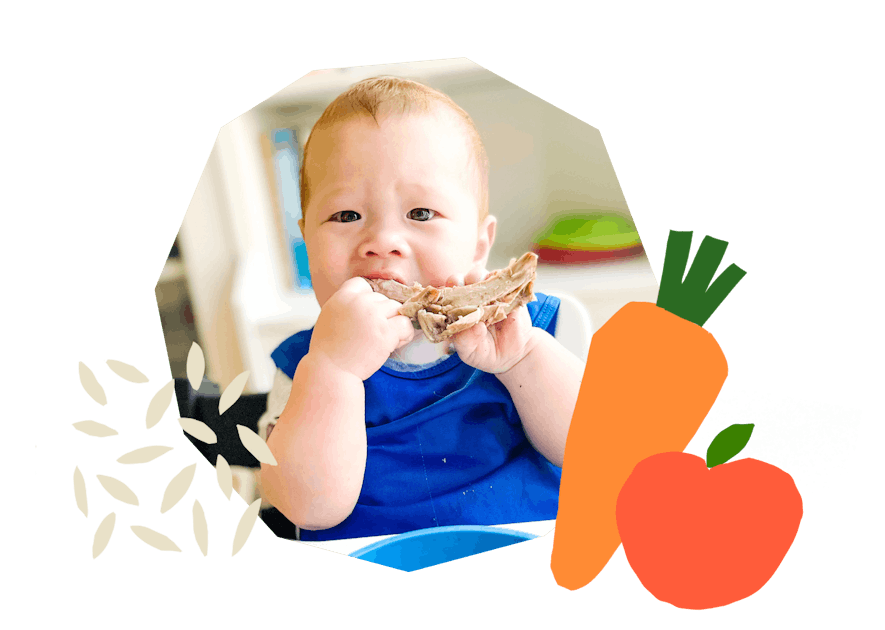
The Program Baby-Led Weaning with Katie Ferraro
A step-by-step digital program for starting solid foods safely and navigating the original 100 FIRST FOODS™ meal plan with baby-led weaning.
 EXPERT-LED, PROVEN APPROACH TO EATING REAL FOOD
EXPERT-LED, PROVEN APPROACH TO EATING REAL FOOD CONCISE VIDEO TRAININGS TO MASTER BABY-LED WEANING
CONCISE VIDEO TRAININGS TO MASTER BABY-LED WEANING 100 FIRST FOODS DAILY MEAL PLAN WITH FOOD PREP VIDEOS
100 FIRST FOODS DAILY MEAL PLAN WITH FOOD PREP VIDEOS
Baby-Led Weaning for Beginners Free Workshop
Is your baby ready to start solid foods, but you’re not sure where to start? Get ready to give your baby a solid foundation to a lifetime of loving real food…even if you’re feeling overwhelmed or confused about this next stage of infant feeding.
Get baby-led weaning recipes and tips delivered to your email inbox.

